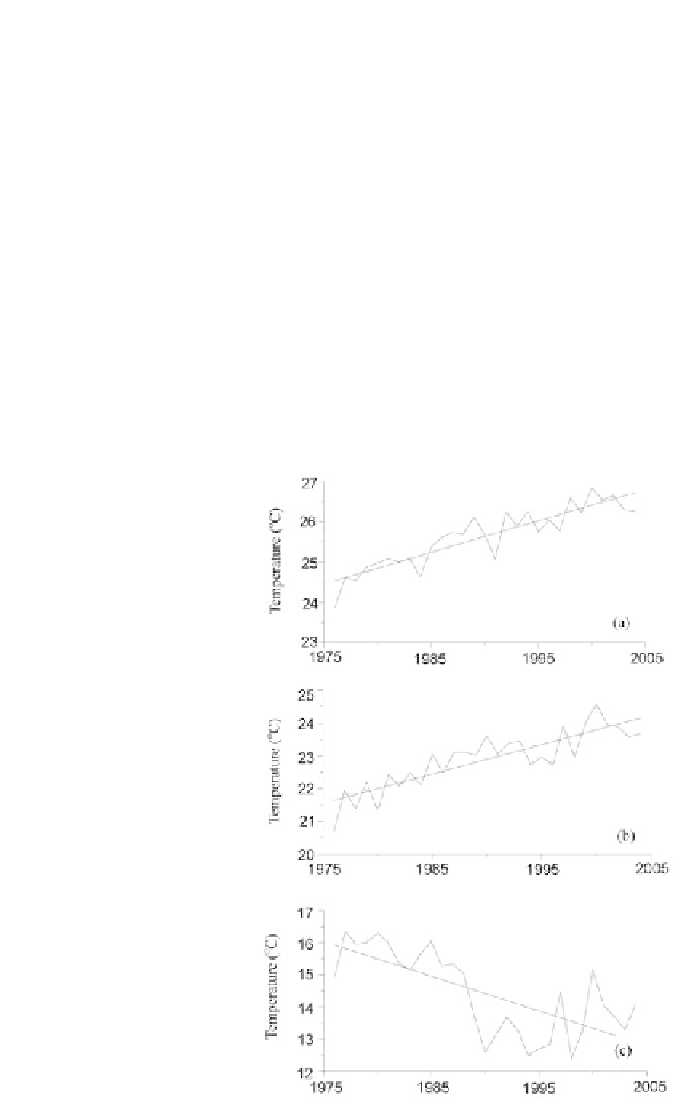Geoscience Reference
In-Depth Information
The decreasing trend in DO concentration (Figure 7) can probably be attributed to
three reasons. First, a small decrease in DO solubility in the seawater can be induced
by the increase in the seawater temperature (Figure 6). Second, an increase in DO
consumption was an important reason. The DO consumption resulted from the de-
composition of organic matter originating mainly from the Pearl River discharge and
the decay of phytoplankton blooms with increasing frequencies in the coastal water
was increasing (Peng, 1994; Tang et al., 2006). Before 1998, HABs (harmful algae
blooms) occurred once or twice a year, but during 1998-2003, blooms increased to
10-20 a year in the nSCS (Tang et al., 2006), which was in phase with the dramatic
decreasing trend in DO (Figure 7). Third, the mixing between the surface water and
the deep layers was reduced by the stronger thermocline, due to the rapid rise in SST
since 1995 (Figure 6a), which resulted in less transfer of oxygen from the atmosphere
to the deeper waters. In addition in 1998, the lowest value of DO was probably attrib-
uted to the strongest upwelling, which occurred that year. According to the compute
of this study, in 1998 the depth of the 20°C isopleths was 84 m, it show the strongest
upwelling (see above paragraph and references in it).
Figure 6.
Variation trends in dissolved inorganic nitrogen (DIN) concentrations in the nSCS during
1989-2004. (a), (b), and (c) show the annual means of sea surface DIN (SSDIN), water column
average DIN in the upper 200 m (DINav) and DIN at the 200 m layer (DIN200), respectively. The
lines are linear regressions.
















